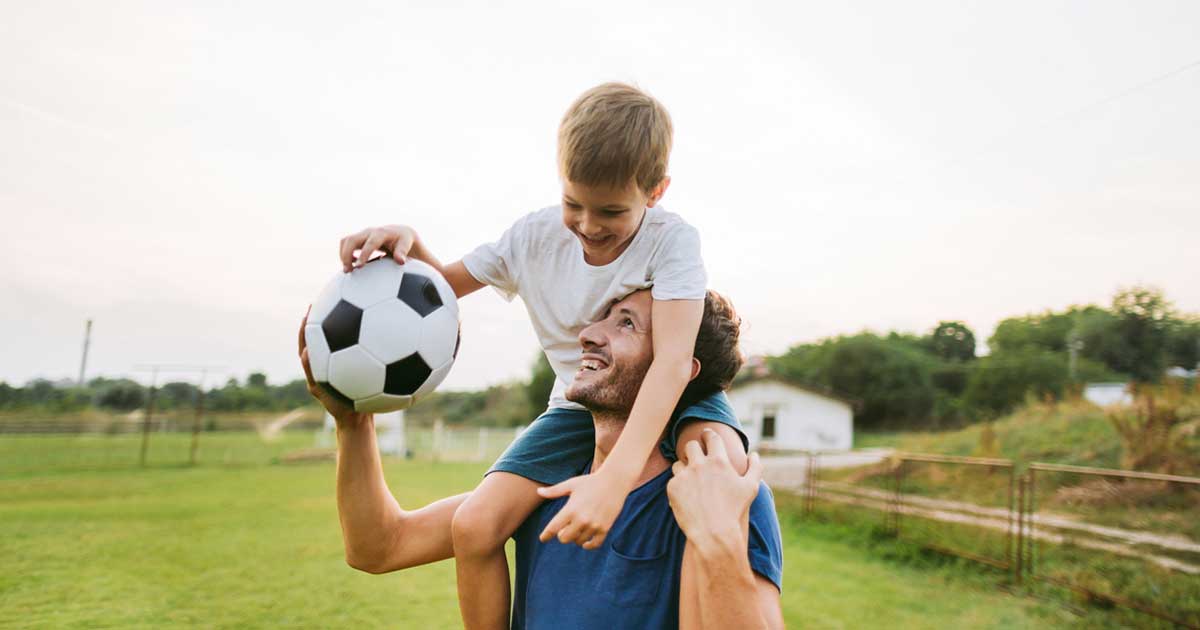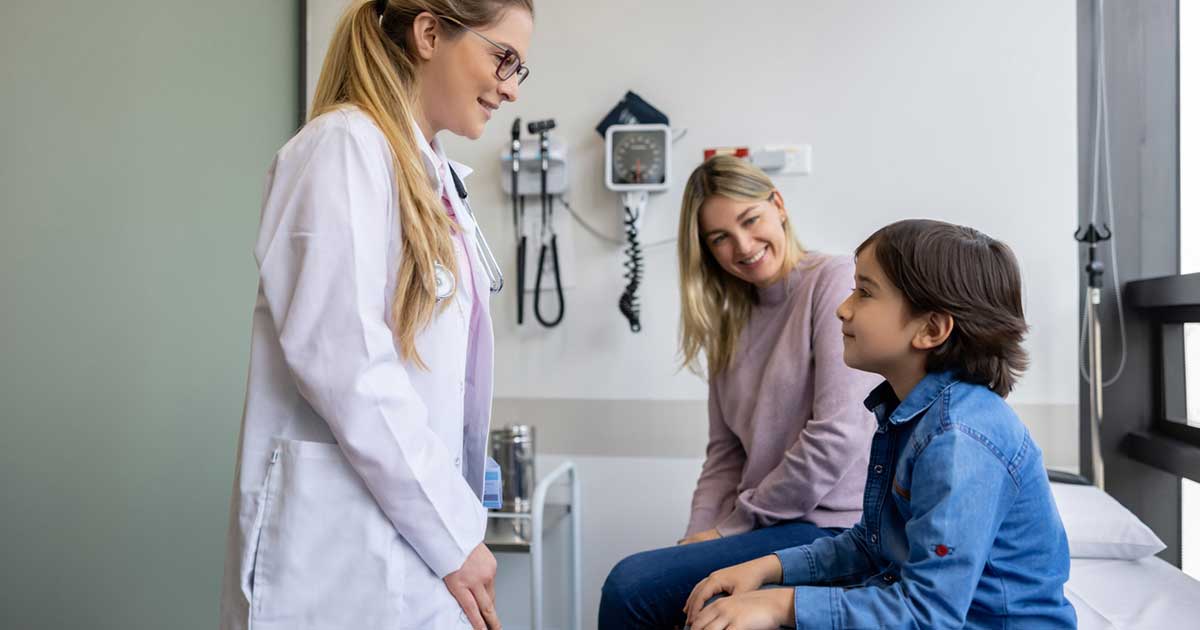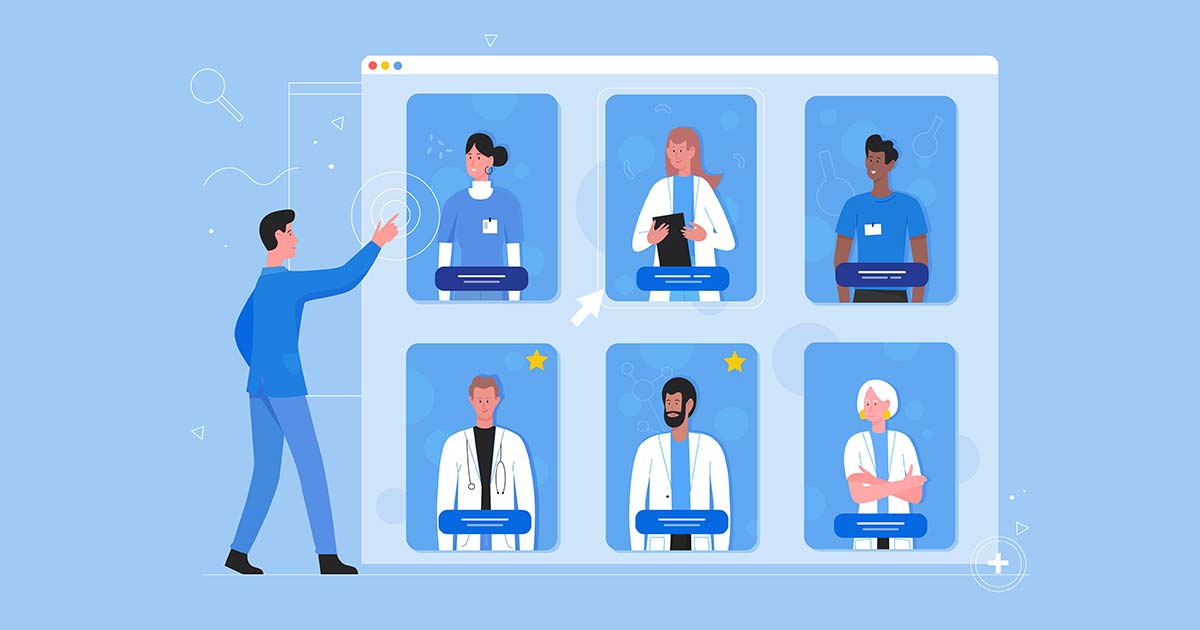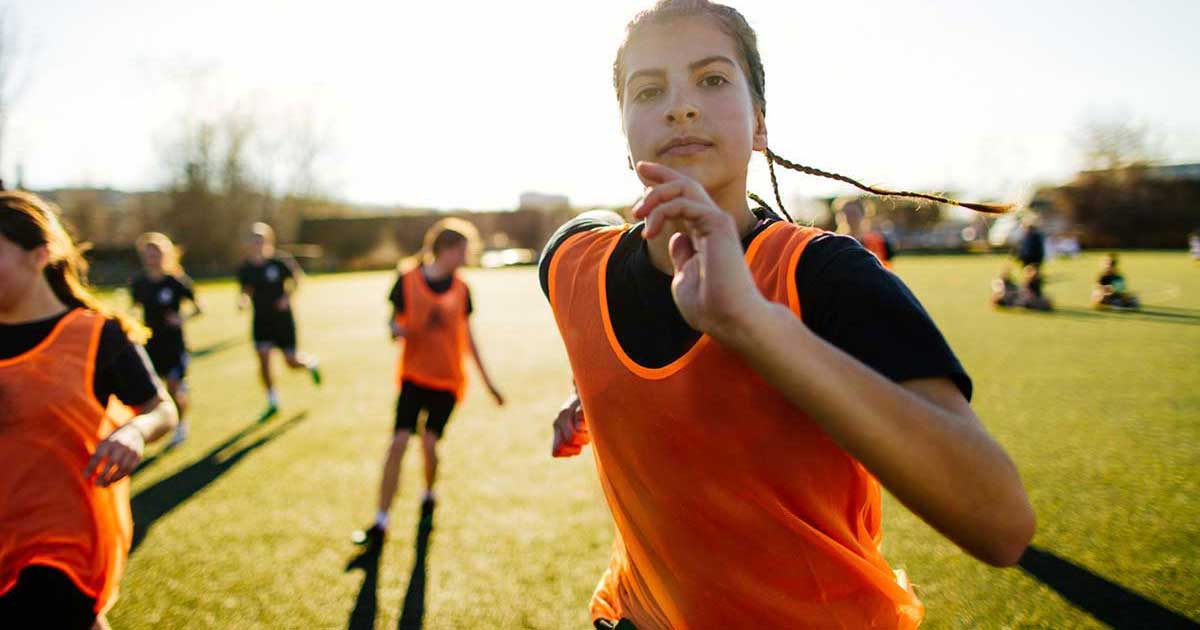
Advice to improve your movement, fitness, and overall health from the world's #1 in orthopedics.
What to Do If You Think Your Child Has Scoliosis
If you were just told that your child may have scoliosis, you probably have a lot of questions. And maybe a little bit of guilt.
Advice to improve your movement, fitness, and overall health from the world's #1 in orthopedics.

It’s not your kid’s fault either, Dr. Heyer adds. Carrying a heavy backpack, playing video games and slouching have all been wrongfully accused of causing this condition. The most common type of scoliosis in kids, called adolescent idiopathic scoliosis, confirms this: “Idiopathic” means the cause is not known.
Here, Dr. Heyer answers some of the questions she hears most about scoliosis—and explains how to navigate next steps if your child is diagnosed with it.
Isn’t everyone’s spine curved? Why is scoliosis different?
It’s natural for the spine to have an S-shaped curve when viewed from the side of the body. However, “in scoliosis, there’s not just a curve; it’s a 3D twisting or rotation of the spine,” says Dr. Heyer. “From the front, it can be an S- or C-shaped curve, which can make the shoulders look uneven or the torso shifted.”
While scoliosis is often diagnosed in adolescence, “it has likely been present already for many years, growing until the curve is large enough to be detectable on examination,” she adds. “It tends to progress during growth spurts, so that’s why it’s often diagnosed in adolescents.” The degree of the curve determines whether it’s diagnosed as scoliosis; only curves of 10 degrees or more are considered scoliosis.
How common is scoliosis?
“Some kids worry that this is very rare,” says Dr. Heyer. In fact, about 1 in 25 kids has it—that’s equal to at least one child in every classroom and a few kids in your child’s grade. “But it’s probably even more common than these statistics show, because many kids have small curves that may go undiagnosed,” she adds.
When should I seek a diagnosis for my child?
As with many conditions, earlier diagnosis is better. “While there’s nothing we can necessarily do to make the curve go away, there are ways to help prevent its progression,” says Dr. Heyer. “The goal of treatment is to prevent it from getting worse.”
Scoliosis only progresses as long as a child continues to grow and the curve remains under 50 degrees. (Curves above 50 degrees can progress even after a child stops growing.) That’s why wearing a brace can be helpful, as it prevents worsening of the curve. Once a child has reached their full height, braces are no longer used, as they don’t provide any benefit.
“If you’re at all concerned your kid has scoliosis, see a pediatrician or a pediatric orthopedist,” she says. “Your pediatrician will let you know if there’s any concern, and if so they’ll refer you to a pediatric orthopedic surgeon.”
What should I expect at the initial exam?
The tests used to diagnose scoliosis are noninvasive. They’re not scary, they don’t involve needles and they’re pain-free.
First, your child may be asked to stand and touch their toes so the doctor can see if there’s any asymmetry to their back or if one shoulder dips lower than the other. They may also look at the child’s waist crease and shoulder heights, which may be slanted or skewed in kids with scoliosis.
If the doctor does see a curve or twist, they’ll use a scoliometer (which looks kind of like a protractor or ruler) to measure the amount of twisting or curving and may also do an X-ray.
When would treatment start, if needed?
Whether or not treatment is needed will be based on the results of the X-ray and the degree of the curve.
If your pediatrician is concerned, your child may be referred to a pediatric orthopedist (like Dr. Heyer) for more tests, possibly including X-rays and/or a full-body MRI. These provide doctors with a clearer view of the spine and a basis of comparison for future exams.
“We use an EOS low-dose X-ray machine, which is good because kids with scoliosis tend to need more X-rays throughout their adolescence to monitor their condition,” says Dr. Heyer.
X-rays also help doctors see how much growth is remaining in the bones. This is important because if a child stops growing before they reach 25 degrees of curvature, they generally won’t need treatment.
The first exam also includes tests of muscle and nerve function. “We look at their reflexes using a reflex hammer and test their muscle strength,” she adds.
If the curve is 10 degrees or more, the child will just be monitored. “We’ll see them every four to six months to keep an eye on it. It could be sooner if they’re in a growth spurt,” says Dr. Heyer.
If the curve is 25 degrees or more, bracing can begin. Most of the time, that means the child will be fitted with a fixed brace to keep the spine in place as much as possible.
Even getting measured for the brace is noninvasive, Dr. Heyer adds. “It’s like getting measured for a dress or suit. We send them to the brace shop at HSS, and the staff take measurements and have it custom made. When it comes in, they have the child try it on and make adjustments so it fits well. The more comfortable the brace is, the more they’re going to wear it.”
She adds that there are some “awesome” social media support groups for kids who do need braces, such as Scoliosis Warriors and Curvy Girls Scoliosis Foundation. “Going through puberty and having to wear a back brace can be a double-whammy,” she says.
If your child is given a brace, it should be worn at least 18 hours a day, but that leaves six hours of brace-free time. Kids can choose when that is from day to day, whether it’s during school, after-school activities or a special event. Other restrictions may be in place for a while if they have to have surgery to correct the curve. And the brace is only worn until a patient is done growing.
Sometimes a type of physical therapy called the Schroth method can also be done to strengthen the muscles of the core. “PT is good for the back, and it can help kids become more comfortable in their brace,” says Dr. Heyer.
As the curve approaches 50 degrees, that’s when discussions about surgery will begin. Curves over 50 degrees tend to get worse, even if a child is done growing.
The gold standard of surgery for scoliosis is a posterior spinal fusion, in which areas of the back affected by the curve are fused together and, in the process, the spine straightened. Kids can usually return to school by four weeks after the surgery, though they may take months to heal fully.
Is there anything my child can’t do with scoliosis?
“In most cases, if a kid has scoliosis, they can do anything they want to do, including any sport,” says Dr. Heyer.
With the right support and treatment, your child can live a life that’s normal and healthy. And that’s probably what you wanted to know most.
Published 9/30/2022


